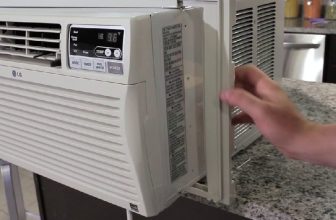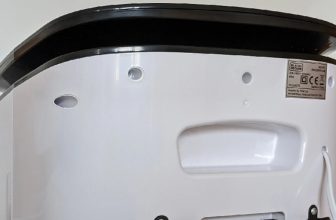How to Quiet a Noisy Window Air Conditioner
Window air conditioners can be incredibly noisy. The sound of the compressor, fan, and other components can become overwhelming if left unchecked. In addition to being loud, a noisy window air conditioner can also create an uncomfortable atmosphere in your home or office space. Fortunately, there are some steps you can take to reduce the noise coming from a window air conditioner.
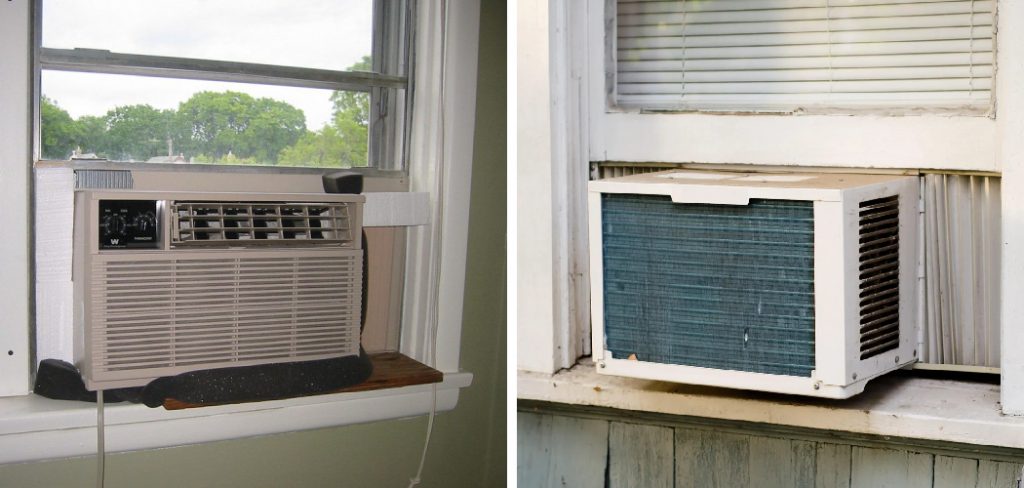
One of the main advantages of learning to quiet a noisy window air conditioner is improved energy efficiency. A quieter unit can reduce noise levels in your home and make it easier to sleep or concentrate on work. Additionally, if your air conditioner is less noisy, it won’t need to use as much energy to cool your home. This can result in lower energy bills and a more environmentally-friendly home. This blog article provides step-by-step instructions on how to quiet a noisy window air conditioner.
Step-by-step Instructions for How to Quiet a Noisy Window Air Conditioner
Step 1: Inspect the Area
Before attempting to quiet a noisy window air conditioner, inspect the area around the unit for any debris or obstacles that may be contributing to the noise. If possible, check to ensure the air conditioner is properly installed and secured in its frame. An improperly installed unit can cause additional noise and vibration as it runs.
Step 2: Clean the Unit
Clean the unit with a soft cloth or vacuum cleaner to remove any dirt, dust, and debris that may be contributing to the noise. Check for any signs of damage or wear, such as cracks and bends in parts of the housing or fan blades. Replacing worn-out parts can help reduce noise and improve the unit’s efficiency.

Step 3: Seal Gaps and Insulate
Air leaks around window air conditioners can cause noise to escape from the unit. To reduce this sound, seal gaps between the unit’s edges and the walls or window frame with caulk or foam insulation. You can add soundproofing insulation to the window frame or surrounding walls for further noise reduction.
Step 4: Check Vibration Levels
Vibrations can cause noise when the air conditioner is running. To reduce vibration, be sure the unit’s fan blades are properly balanced and securely mounted in their housing. You may also want to check the mounting plate and bolts to ensure they are securely fastened. If the fan is still vibrating, you may need to replace it with a new one.
Step 5: Install Soundproofing Materials
Soundproofing materials such as acoustic foam or heavy blankets can help reduce noise levels from window air conditioners. This material can be placed around the unit and on the walls or window frame to absorb sound waves before they have a chance to escape. Additionally, you can install a duct silencer near the air conditioner’s exhaust vent to reduce noise from escaping outside.
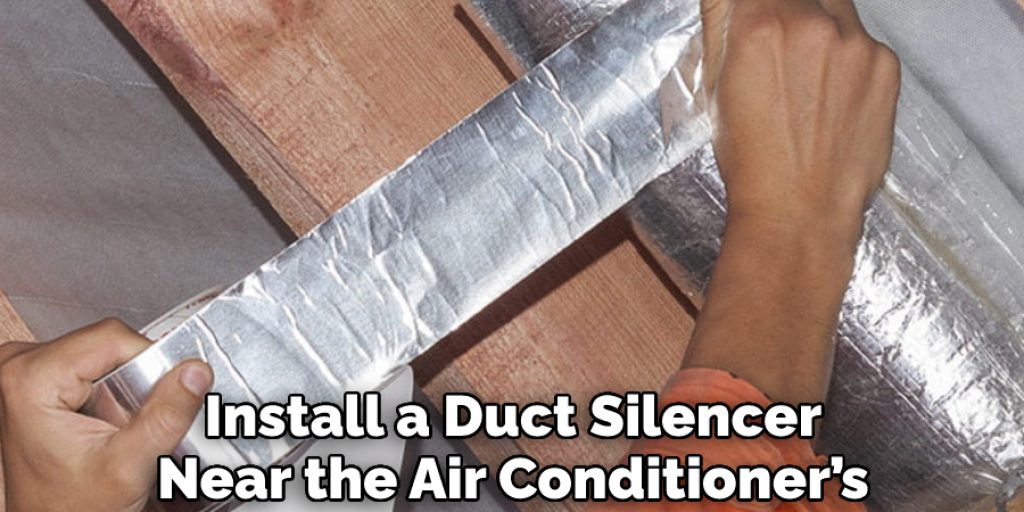
By following these steps, you should be able to reduce the noise from your window air conditioner significantly. You’ll be able to enjoy a quiet, comfortable atmosphere in your home once again.
Tips for How to Quiet a Noisy Window Air Conditioner
- Wear protective gear such as safety glasses, gloves, and a dust mask before beginning any repair or maintenance work on the air conditioner.
- Avoid touching any electrical components without first unplugging the unit or turning off power to it, even if you are troubleshooting with all power off.
- Inspect the air conditioner’s outer cabinet and fan blades for bent, broken, or loose components. Replace any worn-out parts with new ones as necessary.
- Check that the filter is free of dirt and debris; replace it if it isn’t.
- Ensure the drain line from the air conditioner’s condensate pan is clear and can drain properly.
- Check the indoor evaporator coils for dirt or debris buildup; if needed, clean them with a mild detergent solution and rinse them with water.
- Tighten any loose screws or bolts on the air conditioner cabinet, fan blades, or compressor.
- Ensure the air conditioner is level and not bending or putting excessive pressure on the AC unit’s components; adjust accordingly if needed.
Following these steps can help ensure a quieter, more energy-efficient window air conditioner. It will also help to keep you safe during the repair process.
How Do You Check for Any Obstructions That Could Be Causing Excessive Vibration and Noise?
When trying to quiet your window air conditioner, it is important to check for any obstructions that could be causing excessive vibration and noise. The first step is to remove the unit’s front panel and visually inspect the fan blades and grille for any obstruction in the direct path of airflow. This can include leaves, dust, or other debris that may have built up over time. Be sure to wear protective equipment while doing this, such as gloves and a face mask, to avoid any potential hazards.
The motor of the unit should also be checked for any signs of damage that could potentially cause excessive vibration or noise. Feel for any loose parts in the motor area and ensure that all connections are secure and that the motor is properly lubricated.
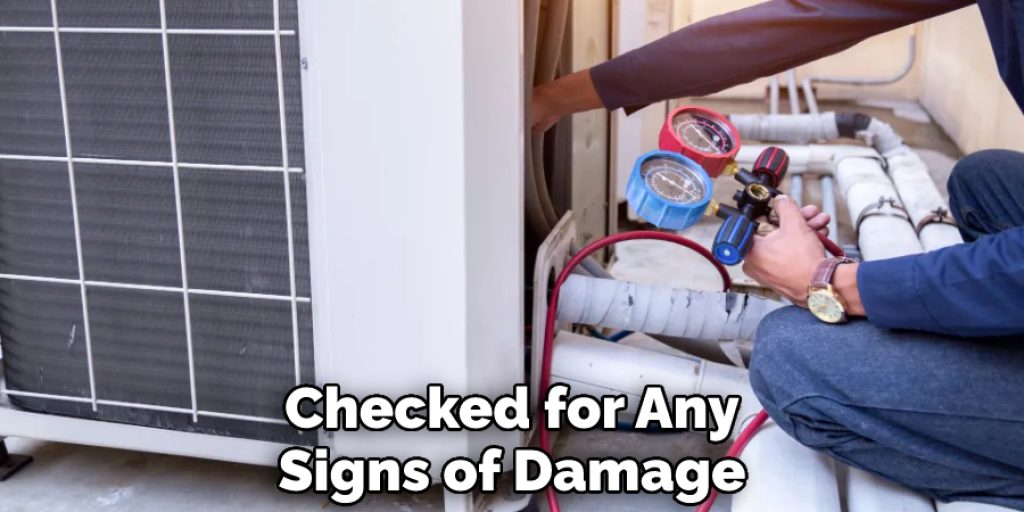
How Do You Know if Your Window Air Conditioner Needs to Be Serviced or Repaired?
Before you can quiet a noisy window air conditioner, you must determine whether it needs to be serviced or repaired. If your unit is making rattling noises, this could indicate that the fan blades are loose and need tightening. If the unit makes squeaking sounds, this often indicates that the bearings inside the motor are worn out and need to be replaced. If there is a whining noise coming from the unit, this indicates that the compressor may need to be serviced or repaired.
If your window air conditioner is making any of these noises, it is best to have it looked at by an experienced technician before attempting any repairs yourself. They will have the knowledge and tools needed to properly diagnose and repair the issue and get your unit back up and running more quietly.
How Can You Check the Fan Blades for Any Damage That Could Be Causing Noise?
- Turn the air conditioner off and unplug it from the wall.
- Carefully remove your window air conditioner’s front cover or grille to access the fan blades inside.
- Check all of the fan blades for any damage, such as bent, warped, cracked, or chipped blades, that could be causing the noise.
- If any damage is found, it will need to be replaced to help reduce the noise coming from your window air conditioner.
- Replace all fan blades with new ones if needed and ensure they are properly installed following manufacturer instructions.
- Once the fan blades have been checked and replaced, reassemble the front grille or cover and plug your window air conditioner back into the wall.
- Turn on your window air conditioner and check to see if the noise has been reduced. If not, move on to the next step in this guide.
- If the noise persists, you may need to call a professional air conditioning technician for further assistance.
How Do You Properly Clean and Maintain Your Window Air Conditioner to Help Reduce Noise?
- Turn the unit off and unplug it from the wall socket before cleaning.
- Vacuum around the outside of the air conditioner using a soft bristle brush to remove any dirt, dust, or debris that has accumulated on its surface.
- Take off the front grille and clean both sides with warm soapy water. Rinse off the grille with a damp cloth, then dry it completely.
- Clean or replace the air filter, depending on what type of filter your unit has. Disposable filters should be replaced according to the instructions in your owner’s manual; washable filters can be cleaned with warm water and mild detergent.
- Use a soft brush to clean the inside of the unit, including the fan blades and evaporator coils. Pay special attention to any areas that are especially dusty or dirty.
- Wipe down all interior surfaces with a damp cloth and mild detergent. Rinse off any soap residue with a damp cloth and dry completely before replacing the grille.
- Apply a few drops of oil to the fan motor bearings, if necessary, and tighten any screws that appear to be loose.
- Reassemble the air conditioner and plug it back in to complete maintenance. Regularly cleaning and maintaining your window air conditioner is essential for keeping it running quietly and efficiently.
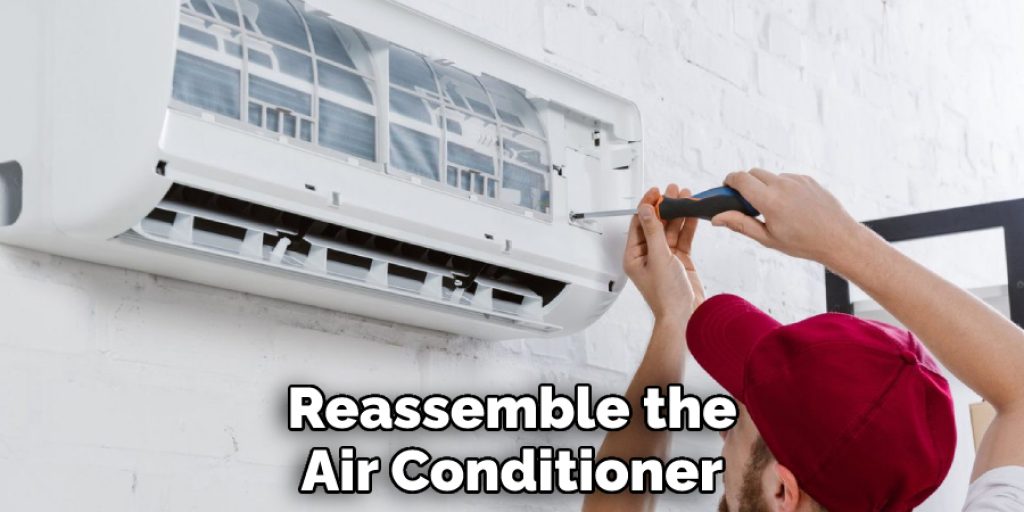
By following these steps, you can help reduce the noise from your window air conditioner and get more comfortable cooling during the summer months.
Conclusion
The main disadvantage of quieting a noisy window air conditioner is that it can be labor-intensive and expensive. Sometimes, you may need to disassemble the unit or replace certain parts to make it quieter. Additionally, you may also need to purchase new insulation materials to help reduce noise levels. Also, depending on the age and model of the window air conditioner, some methods may not be applicable or effective.
In conclusion, if your window air conditioner is producing an excessive amount of noise, there are several steps you can take to reduce the sound level. The most important step is to ensure that all of the parts are properly installed and securely fastened for them to run as quietly as possible. Additionally, you can use insulation material around the unit to diminish sound levels, ensure that your air filters are clean and free from dust or debris, and clean the fins on the evaporator coil. I hope reading this post has helped you learn how to quiet a noisy window air conditioner. Make sure the safety precautions are carried out in the order listed.



